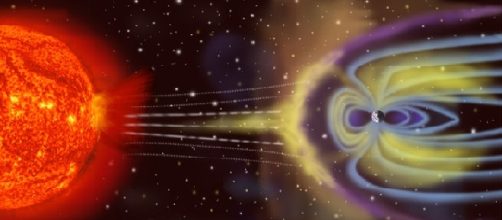Magnetospheric Multiscale Mission (MMS)
Spacecraft from NASA are studying the processes that occur at the boundaries of the earth´s magnetosphere. Flying in a tetrahedral formation, foursatellites have uncovered the phenomenon of magnetic reconnection, which is the process that lets the solar wind enter the earth´s atmosphere, causing disturbances in aerospace weather, telecommunication systems, GPS and power line grids. It also produces the Auroras at the earth´s poles.
What does the MMS do?
It studies the mechanisms involved in the connection and reconnection of the Sun´s and Earth´s magnetic fields.
Four identical satellites measure plasmas, field lines and particles in an orbit where reconnection frequently occurs.The mission reveals the diminutive structure and dynamics of the electron diffusion region.
Source of magnetic fields
Stellar bodies, including planets, stars and massive black holes possess a magnetic field. The field produces field lines like a magnet. The field lines are produced in the south pole of the body and travel in curved lines across the body then fall back into the north pole of the body. Normally, electrons and ions (charged particles) travel along the field line; however, occasionally, outbursts may be produced.
What is the objective of this mission?
By monitoring the processes during magnetic reconnection, MMS may provide an ample knowledge of the processes occurring at the fast moving electron region of the magnetosphere, thus enabling the implementation of new methods and technology for the development of space exploration and weather prediction.
Using advanced technology and measurements, MMS has discovered evidence of electron demagnetization and acceleration at a region where the interplanetary magnetic field connects with the earth´s magnetic field. The sensors in the spacecraft allow to measure charged particle speeds and magnetic fields with the highest resolution in milliseconds, which is needed to capture the diminutive fast moving electron diffusion zone.

